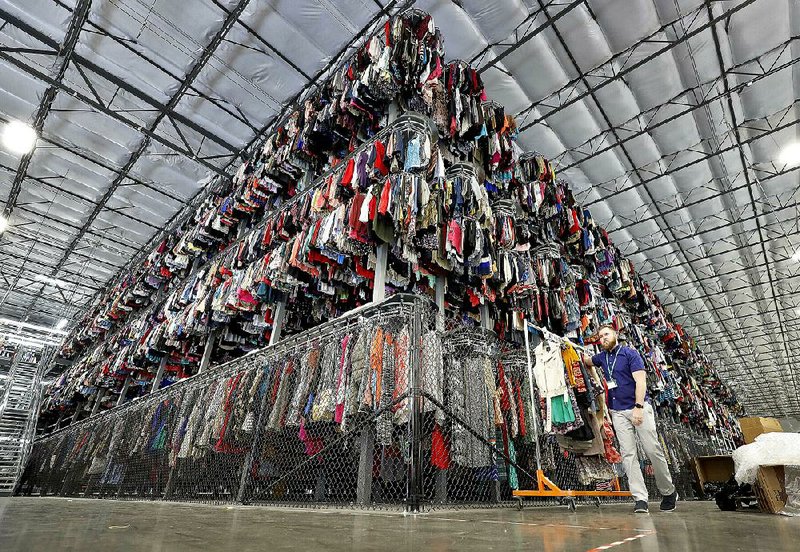NEW YORK -- As department stores watch their customers flock to secondhand stores, some are trying to bring them back by partnering with online resale sites.
Last week, J.C. Penney and Macy's announced a pilot program to set aside sections inside a few dozen of their stores for used merchandise sold by ThredUP. James Reinhart, co-founder and chief executive officer of ThredUP, says his company has a similar deal with retailer Stage Stores, which opened 12 resale shops last year for a total of 45.
Neiman Marcus was the first big department store chain to get into the resale business. In April, it bought a minority stake in Fashionphile, an online seller of used designer accessories. And this fall, it will launch shops inside some of its own stores where customers can sell -- but not buy -- pre-worn designer items to Fashionphile. Presumably these customers will take the money from their sales and spend it at Neiman Marcus -- or at least that's what the department store is hoping for.
Analysts applaud the strategy as a way to drive customers into stores, but they also see it as a desperate attempt that could undermine business.
"It's good that that they are looking at modern ways of shopping," said Neil Saunders, managing director of GlobalData Retail. "But this is not the solution to their deep-seated problems. There's a dearth of innovation. They're always playing catch-up. This won't be unhelpful, but it won't be transformative."
Saunders says resale shops could cannibalize other parts of Penney's and Macy's business. At the same time, he and others believe it could further strain the relationship between traditional retailers and their suppliers, who have been financing more of the retailers' marketing expenses as sales falter, while also increasingly bearing the costs of price markdowns.
But Jon Reily, vice president and global commerce strategy lead at Publicis Sapient, believes brands may not mind the new competition from resellers since they need department stores to bring in as much customer traffic as possible.
Although the resale business still accounts for a fraction of the overall retail pie, it's growing exponentially and is also influencing shoppers' habits. Sales of secondhand merchandise are predicted to expand to $51 billion by 2023 from $24 billion last year, according to GlobalData PLC, which created a report for ThredUP. And according to a survey by Boston Consulting Group, one-third of shoppers queried said they sold items to clean out their wardrobe and finance new purchases.
Shoppers for years have been buying and selling used clothes at thrift shops and on eBay, especially so during the recession. But many of the shops were dingy, and it took weeks or even months for consignors to get payment for their goods.
Then a new generation of online secondhand shops like ThredUP as well as names like Poshmark and luxury site TheRealReal.com cropped up and flourished because they made the shopping experience easier with new technology and services.
The RealReal, which was founded in 2011 and made a successful debut on the Nasdaq in late June, offers a "white glove" service where consignors make an appointment with one of its luxury managers and receives a complimentary consultation at home. Poshmark, also founded in 2011, expanded early in June into home decor with items including bedding and bath. And luxury handbag maker Mark Cross recently announced it would launch a resale site.
But while these businesses have made their mark online, they also see the need to have a physical presence. The RealReal operates three stores -- two in New York and one in Los Angeles -- while ThredUP operates three stores in the San Francisco area.
Jamie Sabat, director of trends and consumer forecasting at Streetsense, says having a store is important because nearly 80% of Generation Z customers -- the generation after millennials, those who are born between the mid-1990s and the early 2000s -- enjoy the shopping experience.
Still, there's no guarantee that secondhand stores will lure young shoppers back into department stores. Morgan Toliver, 24, has been shopping for secondhand clothes for at least a decade, first at Goodwill and now more recently at ThredUP, because she's interested in eco-friendly clothes.
She says she hasn't shopped at J.C. Penney or Macy's for years and doesn't expect to now.
"I feel like that would still be putting money in the pocket of those who run fast-fashion and environmentally unfriendly businesses," she said.
Business on 08/21/2019
